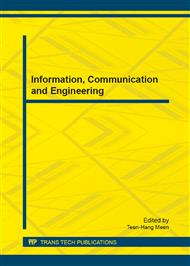p.111
p.117
p.123
p.129
p.135
p.141
p.147
p.153
p.158
Using Graphic Hardware to Accelerate Pocketing Tool-Path Generation
Abstract:
In this paper, we propose a new approach to accelerate the pocketing tool-path generation by using graphic hardware (graphic processing units, GPU). The intersections among tool-path elements can be eliminated with higher efficiency from GPU-based Voronoi diagrams. According to our experimental results, the GPU-based computation speed was seven to eight times faster than that of CPU-based computation. In addition, the difference of tool-path geometry between the CPU-based and GPU-based methods was insignificant. Therefore, the GPU-method can be efficiently used to accelerate the computation while the precision is assured for the tool-path generation in pocketing machining.
Info:
Periodical:
Pages:
135-140
Citation:
Online since:
February 2013
Authors:
Price:
Сopyright:
© 2013 Trans Tech Publications Ltd. All Rights Reserved
Share:
Citation:


